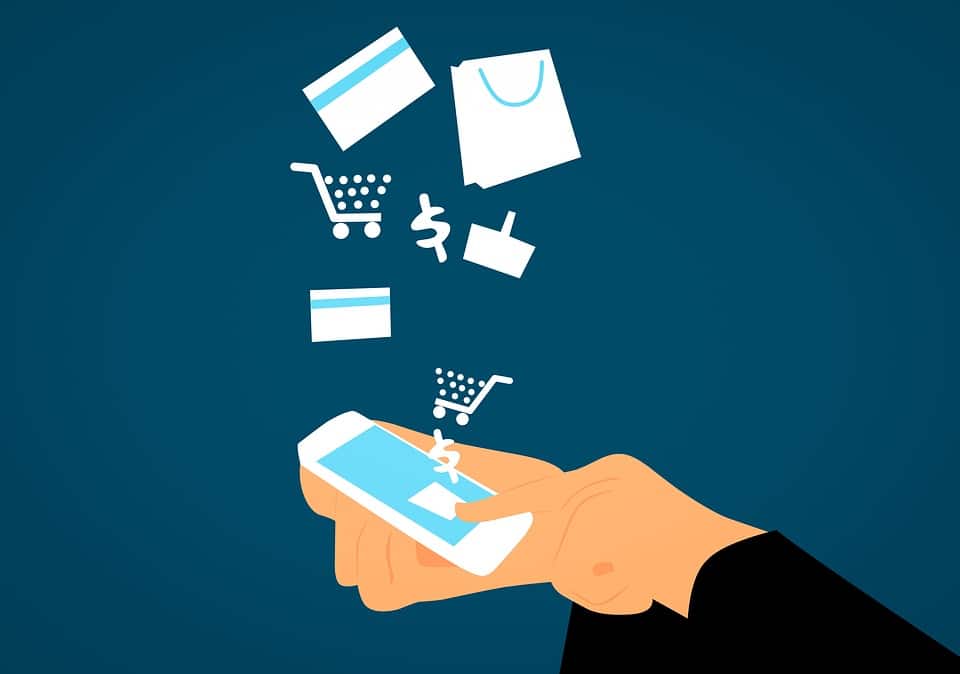The internet certainly has changed how we do things in a way that no one would’ve thought possible a couple of decades go. Transferring money to distant countries became a click away, finding any kind of information doesn’t require a trip to the public library anymore, and more importantly, you can buy anything you want online.
E-commerce has become quite relevant over the past few years, and it’s one of the biggest industries in the world, with at least 1.6 billion buyers in 2017 and trillions of dollars spent. These numbers are even expected to grow even more in a few years, with 2021 promising to be a huge year for E-commerce. But what else does the future hold in store?

More personalization and customer engagement
One of the main problems that used to plague E-commerce stores was the fact that they lacked the face-to-face personal experience you’d get at a retail store. There’s no salesperson to tell you where to go or which products to buy, and that was a problem for some people. Online stores have worked relentlessly to create a personalized experience for their users to compensate for the absence of the in-store retail experience.
Leveraging the power of online data such as search queries, page visits, and purchase and browsing history, E-commerce companies have managed to cater to their clientele’s needs and interests by giving them recommended products based on past searches/purchases, ads tailored specifically to their needs, and marketing copy that feels personal. The future will definitely see more brands following suit and implementing these technologies into their stores in even more efficient ways to draw in more customers.
The numbers show that consumers spend almost 50 percent more time on your page if the content and overall experience are personalized, and this is why more and more E-commerce stores are working relentlessly to make sure that happens. There’s no doubt that the future will have more personalized approaches to make sure people forget about retail stores in favor of online ones.
Mcommerce to expand
Mobile commerce is not exactly new, but it has been booming in very fast rates over the past few years, and it will only continue to do so. Projections for the end of 2019 show that E-commerce sales will make almost 45 percent of total sales in the US, about 5 percent higher from 2018.
It makes sense if you think about, with billions of smartphone users around the world resorting to that option –– and their numbers are only growing. This is why stores cannot afford to make their mobile shopping experience poor. They need to leverage technology to create the fastest and best mobile shopping experience out there. With smartphones evolving as fast as they are, desktop shopping isn’t as popular as it used to be, and it’ll probably only decline in the future. This means that Mcommerce is a crucial aspect that E-commerce businesses have to consider, whether through an app or a website, to make it seamless and easy to perform purchases on phones.
Search engine optimization to play a bigger role
With the rise of E-commerce businesses, search engine optimization became more relevant and more technologies and strategies have been coming to life to take brands to the next level. Any online business needs SEO to make sure it ranks higher on the search results because numbers show that people are more likely to choose one of the top 5 results in their search. Fortunately, SEO practices have been evolving at a rapid pace, and more ideas and innovations are constantly being developed to ensure businesses have options to improve their rankings.
The future will definitely see even newer technologies and ideas on how to improve and implement search engine optimization, and even more, companies will start using the power of SEO to reach bigger audiences and make sure more people are acquainted with their brands. As it is already, many E-commerce websites right now that want to compete with the likes of Amazon are optimizing their content and making sure it’s at the highest level, and in the future, pretty much any online business will be leveraging SEO to ensure its success.
Artificial intelligence to prevail
That’s not in a Terminator kind of way where AI takes over the world. By the end of this year and in upcoming ones, artificial intelligence forms such as chatbots and AI support will take over online stores, because that’s what they’re designed for –– enhancing the customer’s shopping experience.
The great thing about AI assistants is the fact that they can handle several tasks that used to need a human to do, like handling inventory and answering inquiries. They can manage several tasks which would give you time to focus on improving other aspects of your business. Chatbots, for instance, can answer questions, discuss a complaint, or reply to an inquiry about a product and its features. There’s no denying that the popularity of AI assistants and tools is on the rise, with many free options where you can create your very own chatbots too, and in the future, they’ll definitely play a bigger role in E-commerce and create an even better customer experience.
More DNVBs to rise
Digitally native, vertically integrated brands (DNVBs) are basically online stores that sell their very own products on their native websites. They compete against giants like Amazon or Alibaba by basically removing the middleman, selling directly to consumers without the need for a third party.
These brands usually offer a specific service and deal with a niche clientele, but that’s one of the reasons why they’re unique and are growing in popularity. These web-only brands are gaining a bigger following with each passing year, and they grow at impressive rates. They’re expected to take a big chunk of the market in the upcoming years, and you can definitely expect to find some becoming household names in the not so distant future.

Interactive product experience to boom
If you’ve ever done any online shopping, you’ve probably paused before finalizing the payment, asking yourself if you should proceed with the transaction. It’s only natural you hesitate before buying anything online because you haven’t tried it on or got the feel of what it’s really like.
Technology is evolving at exponential rates, and images of said products are not enough anymore, so something else is on the rise, interactive product visualization to help you really experience what it’s like to get that item. You have technologies like virtual reality, 3D imaging, and augmented reality to help you interact with a product right on your phone or laptop. Some brands give you the option of designing the product online from all angles, flipping it and zooming in and out to nail every tiny detail. This technology will definitely be playing a huge part in the future of E-commerce and how people experience items before buying them.
There’s no telling what the future will be like, but you can rest assured that E-commerce is shaping up to be one of the biggest industries in the world within the next few years. With new technologies and approaches to the rise all the time, soon people will do all their shopping from their phones or tablets.

